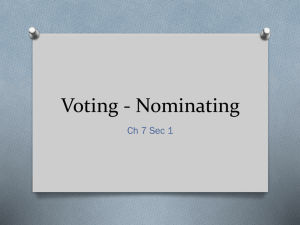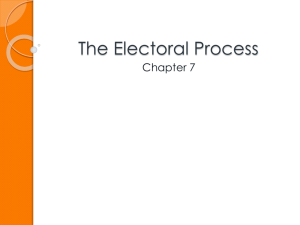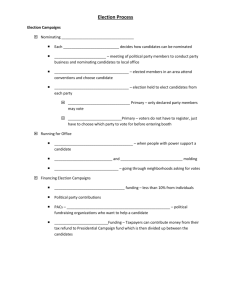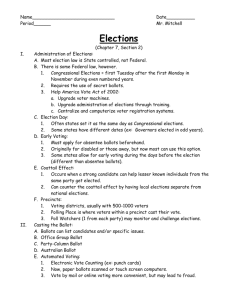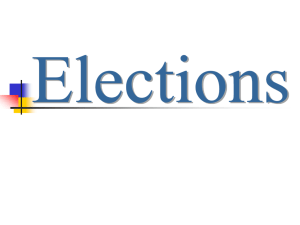Election Process and Political Parties - American History
advertisement
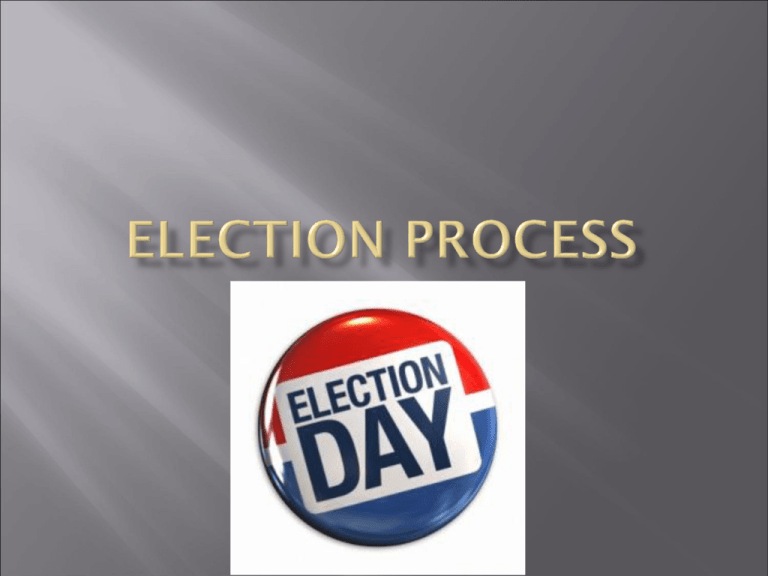
Nominating Candidates Each state decides how candidates can be nominated Caucuses – meeting of political party members to conduct party business and nominating candidates to local office Nominating Conventions – elected members in an area attend conventions and choose candidate Nominating Candidates Primary Elections – election held to elect candidates from each party Closed Primary – only declared party members may vote Open Primary – voters do not have to register, just have to choose which party to vote for before entering booth Running for Office Endorsement – when people with power support a candidate Advertising and Image molding Canvassing – going through neighborhoods asking for votes Financing Election Campaigns Private funding – less than 10% from individuals Political party contributions PACs – Political Action Committees – political fundraising organizations who want to help a candidate Public Funding – Taxpayers can contribute money from their tax refund to Presidential Campaign fund which is then divided up between the candidates Primary Elections – elections held to elect candidates General Elections Voters cast ballots for candidates Held first Tuesday after first Monday in November Popular vote – votes cast by the people Electoral vote – votes cast for President as part of the Electoral College Non Partisan Elections – non party elections Political parties are prohibited from participating Candidates organize and run without party help Special Elections Run-off Elections – when there is a “tie” a run off must be held to determine a winner Recall – voter can remove a public official from office Absentee voting – voting earlier than the election day Those too ill or disabled Those who will be away from their county Those serving in the military Straight Ticket/Party Voting – voting only for one political party Split Ticket Voting – voting for different parties for different offices in the same election Ballots – device by which a voter registers a choice in an election Paper Ballots – first used in our history Australian Ballot Four essential features of the Australian Ballot It is printed at the public expense It lists the names of ALL candidates in an election It is given out ONLY at the polls, one per qualified voter It is marked in secret Two basic varieties of the Australian Ballot Office group ballot Original form of the Australian ballot Can be called the Massachusetts ballot Candidates are grouped together by which office they want to run for Party column ballot Can be called the Indiana ballot Each party’s candidates are listed in a column under the party’s name There tends to be a box on this ballot to choose to vote for one political party only Sample Ballots Ballots that list all candidates for office to try to assist the voting public to make an informed choice Bedsheet Ballots A typically American ballot because of its length Local levels where most often seen because many offices are listed Voters can become apathetic because of the length of the ballot The term associated with this is Ballot Fatigue
